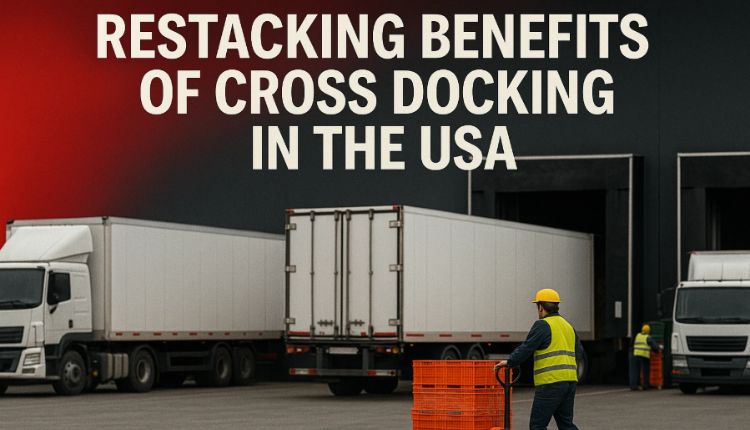In today’s logistics landscape, where speed and efficiency are non-negotiable, restacking has emerged as a critical enabler within cross-docking operations. Across the United States, supply chains are increasingly turning to cross-docking to eliminate warehousing time and deliver goods faster than ever before. But the engine that keeps this streamlined system running smoothly? Restacking.
Restacking in the context of cross-docking refers to the rapid reorganization of freight—typically on pallets or in crates—after it arrives at a facility and before it moves out on another truck. This process ensures load integrity, route optimization, and compliance with diverse shipping standards. Without restacking, cross-docking would be chaotic, error-prone, and inefficient.
Why Cross-Docking Is Dominating U.S. Logistics
Cross-docking minimizes the need for storage. Instead of placing goods on shelves, companies move them directly from inbound to outbound transportation. This reduces overhead, accelerates distribution, and enables just-in-time delivery models.
But these benefits are only possible when freight is restacked to suit:
- Outbound truck dimensions and weight limits
- Mixed load destinations or retail-specific formats
- Load sequencing requirements for multi-stop deliveries
Restacking turns a messy arrival into a perfectly planned departure.
Key Benefits of Restacking in Cross-Docking
Cross-docking facilities across the USA—from port cities to inland freight hubs—report major advantages when they invest in restacking infrastructure:
- Damage Reduction: Poorly stacked or overpacked pallets arriving from long-haul carriers can be stabilized and rebuilt.
- Time Efficiency: Restacking eliminates delays by pre-sorting and staging goods for exact truck routes.
- Retail Compliance: Large retailers demand precise palletization; restacking ensures every shipment matches specific store requirements.
- Maximized Trailer Use: With restacking, every inch of trailer space is used, reducing empty miles and emissions.
These outcomes directly influence customer satisfaction and long-term logistics profitability.
Industries That Gain Most From Restacking in Cross-Dock Models
Many sectors rely on cross-docking with restacking to stay competitive in fast-moving U.S. markets:
- E-commerce Fulfillment: Rapid SKU turnover and high order variability demand real-time load adjustments.
- Grocery and Food Distribution: Restacking prevents spoilage by minimizing time outside temperature-controlled units.
- Apparel and General Merchandise: Precise restacking prevents brand damage and meets packaging protocols.
- Automotive and Industrial Supplies: Mixed-component shipments benefit from route-based restacking.
No matter the industry, the goals are the same: speed, accuracy, and cost savings.
Infrastructure and Restacking Equipment in the U.S.
Leading American cross-docking centers are investing in purpose-built restacking zones. These areas are:
- Located near loading docks for quick transfers
- Equipped with forklifts, stackers, and inverters
- Staffed with trained crews who specialize in custom palletizing
- Integrated into WMS and TMS platforms for load tracking
This setup allows restacking to occur without disrupting flow, maintaining high throughput even during peak periods.
Restacking as a Strategic Logistics Advantage
Beyond operational value, restacking offers strategic benefits. It enables logistics providers to:
- Scale rapidly without expanding storage facilities
- Meet client expectations for fast, error-free shipping
- Optimize labor by creating efficient restacking SOPs
- Win new business by offering custom freight handling services
Restacking is not just a warehouse task—it’s a service differentiator.
Sustainability Gains Through Restacking
In addition to cost and speed, restacking supports greener supply chains. Efficient restacking:
- Reduces packaging waste by minimizing overwraps and void fill
- Cuts fuel consumption by maximizing trailer capacity
- Increases crate and pallet reuse across closed-loop systems
As ESG standards rise in American logistics, restacking is aligning with broader sustainability goals.
Final Thoughts
Restacking is the behind-the-scenes hero of successful cross-docking in the USA. It bridges the gap between chaotic inbound freight and structured outbound delivery. By investing in restacking processes and equipment, businesses can elevate cross-docking from a cost-cutting tactic to a value-driving logistics strategy.
In a world where same-day delivery and flawless shipping are the norm, restacking makes the difference.






